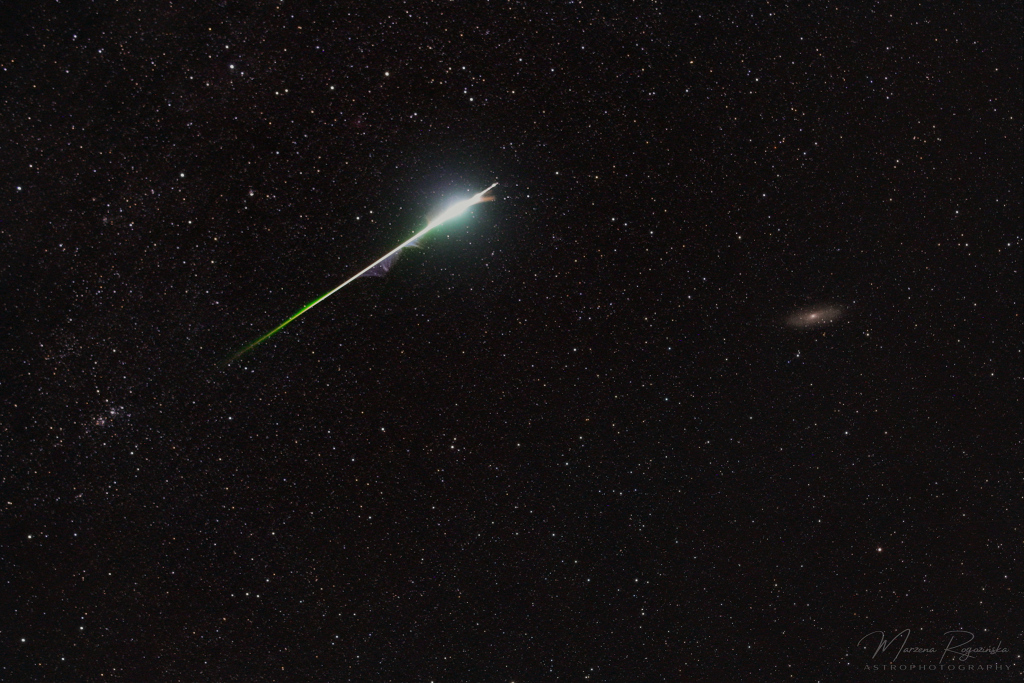宇宙岛,宇宙沙
(原标题: Island Universe, Cosmic Sand)
2021-08-14
浏览次数: 162
我们银河系中的恒星散布在这张引人注目的视野中。从8月13日午夜后的凌晨开始,在波兰巴斯科-兹德鲁伊的夜空中,30秒的曝光记录了英仙座流星的彩色和明亮的轨迹。在每年英仙座流星雨的高峰期附近,它从左下到右上闪烁。这颗宇宙沙粒是来自周期性彗星斯威夫特-塔特尔的一粒尘埃,在以每秒60公里的速度穿过地球大气层时蒸发了。在照片中央的右上方,远离银河系的恒星,是一个被称为M31或仙女座星系的宇宙岛。仙女座星系是最遥远的物体,肉眼很容易看到,大约250万光年远。然而,可见的流星轨迹仅在地球表面上方约100公里处开始。它指向画面左下角英仙座的流星雨。跟随下面这条明亮的英仙座流星轨迹,向左看英仙座的双星团NGC 869和NGC 884。著名的APOD图片提交:英仙座流星雨2021
查看原文解释
Stars in our own Milky Way Galaxy are scattered through this eye-catching field of view. From the early hours after midnight on August 13, the 30 second exposure of the night sky over Busko-Zdroj, Poland records the colorful and bright trail of a Perseid meteor. Seen near the peak of the annual Perseid meteor shower it flashes from lower left to upper right. The hurtling grain of cosmic sand, a piece of dust from periodic comet Swift-Tuttle, vaporized as it passed through planet Earth's atmosphere at almost 60 kilometers per second. Just above and right of center, well beyond the stars of the Milky Way, lies the island universe known as M31 or the Andromeda Galaxy. The Andromeda Galaxy is the most distant object easily visible to the naked-eye, about 2.5 million light-years away. The visible meteor trail begins only about 100 kilometers above Earth's surface, though. It points back to the meteor shower radiant in the constellation Perseus off the lower left edge of the frame. Follow this bright perseid meteor trail below and left to the stars of NGC 869and NGC 884, the double star cluster in Perseus. Notable APOD Image Submissions: Perseid Meteor Shower 2021
© Marzena Rogozinska
